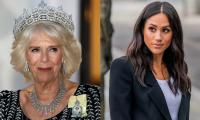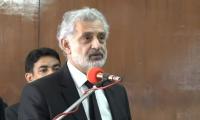Donald Trump’s special envoy on Afghanistan, Zalmay Khalilzad has undertaken another round of consultations in Kabul and Islamabad before his next meeting with the Afghan Taliban representatives in Doha, to carry forward the year-old talks process to end America’s longest war.
Prospects of the two sides sewing up a peace accord in the coming weeks are rated as very high. However, Khalilzad’s oft repeated caveat that nothing is agreed till all is agreed reminds us of the pitfalls in this highly complex set of negotiations.
Beware the spoilers, some sceptics warn. Watch out for the devil in the details, others caution. Will the much-awaited Afghan peace, which has been mostly breaking out in talks held in foreign capitals, finally reach the country which has been in the throes of wars since the 1970s?
Pakistan’s civil and military leadership is fully supporting the talks process as the most comprehensive effort to end the war that began with the US and allied forces occupying Afghanistan after 9/11. Washington and capitals of other major powers are appreciative of Pakistan’s facilitation in the peace talks. But this role has its limits as finally the terms of peace depend upon the principal players and the various Afghan groups.
US President Trump has made it abundantly clear that he wants most of the US troops out of Afghanistan before the presidential election in November, 2020. He seems undeterred by the multiple challenges to his presidency, aggravated by the growing clamour among Democrats for his impeachment, because Republicans still control the Senate. It can, therefore, be inferred that the Afghan peace process will go ahead and we are very close to the endgame. Understandably, participants in the process, particularly the fragile order in Kabul, are anxious about safeguarding their interests.
Islamabad was host to a trilateral Pakistan-Afghanistan-China Track II meeting on August 1, which provided a valuable opportunity to compare the hopes and doubts about the peace settlement and thereafter. One preoccupation of some delegates was whether the Americans would be able to carry out a ‘responsible’ withdrawal as compared to the ‘irresponsible’ Soviet withdrawal 30 years ago that led to endless turmoil.
Back then, Gen Ziaul Haq had urged the Soviets not to rush out of Afghanistan until some viable transition arrangements were in place. Moscow was not interested, and the Soviet tanks rolled back over the Amu River, just as they had rolled into Afghanistan ten years earlier. Moscow had left its satrap Najibullah in the presidential palace, and the mujahideen battling to conquer Kabul only to start infighting. The Afghans do not want a repeat of the 1990s and ardently hope that an inclusive transition setup will be in place as American soldiers fly back home.
All sides agree that the talks have reached a critical stage and the protagonists, including the Taliban, are feeling war fatigue and hence are willing to give peace a chance and share power with other Afghans, possibly with some international guarantees for the peace settlement. The next round of intra-Afghan talks is scheduled to be held in Oslo on August 7, to finalize the roadmap for peace agreed in Doha.
The trilateral Track II meeting coincided with Khalilzad’s arrival in Islamabad. While praising Pakistan’s role in facilitating the talks with the Taliban, the Afghan representatives urged both China and Pakistan to support reconciliation and reconstruction in the war-ravaged country.
The Chinese delegate affirmed that the US wanted a comprehensive settlement. He supported an Afghan-led and Afghan-owned peace process aimed at reconciliation leading to a consensus on the future setup in line with the country’s multiethnic character.
Afghan delegates representing different groups were mostly optimistic about the intra-Afghan dialogue and felt the peace process was gathering momentum. It was acknowledged that peace would require concessions and sacrifices. Further, the US should provide a reasonable time for its withdrawal. The Soviet Union’s hasty withdrawal had plunged Afghanistan into a war that goes on till today.
In the most optimistic scenario, a ceasefire may be agreed, with an interim setup plus guarantees of Afghan soil not to be used to attack other countries, and a timetable for US withdrawal. China’s role as a possible guarantor was evoked along the SCO’s support for the peace process.
Pakistani delegates echoed the view that things were indeed looking up for the peace talks with the possibility that the Taliban could come down a “few notches” from their hard-line positions to reach a settlement. An Afghan delegate confirmed that the Taliban were changing their position on power-sharing and human rights. References were made to the danger posed by the penetration of Daesh in some areas, viewed with concern by the Afghans and other powers.
Peace terms have to cope with internal and external dynamics. Internally, the Afghan groups are trying hard to reach a settlement while China and Pakistan were important partners as both were affected by terrorism. A Chinese representative asked whether the Taliban would take part in elections. The Afghan side mentioned the possibility of the Taliban forming a party.
A number of issues need to be resolved in the upcoming US-Taliban and intra-Afghan talks in Doha and Oslo, respectively. Khalilzad has pointed out on Twitter that “Peace will require reliable assurances from Afghanistan and Pakistan that neither side’s territory is used to threaten the other.” In his view, “Such assurances on top of an intra-Afghan comprehensive peace agreement will allow increased regional economic integration, connectivity and development.”
This is only one of the elements in the long list of measures envisaged if durable peace breaks out after four decades of turmoil in Afghanistan.
Email: saeed.saeedk@gmail.com
A representational image showing residents walking at a wholesale market in Karachi. — AFP/FileOnce again there is...
A representational image showing late Pakistani human rights activist and Supreme Court lawyer Asma Jahangir. —...
A representational image showing a security personnel sanding guard beside a ship carrying containers at Gwadar port....
A health worker administers polio vaccine drops to a child during a door-to-door polio vaccination campaign in Lahore,...
Armed militants of the banned Tehreek-e-Taliban Pakistan pose for a photograph in Orakzai Agency. —...
An aeroplane of the national flag carrier of Pakistan is seen in this file photo. — AFPWhile Pakistan considers...







